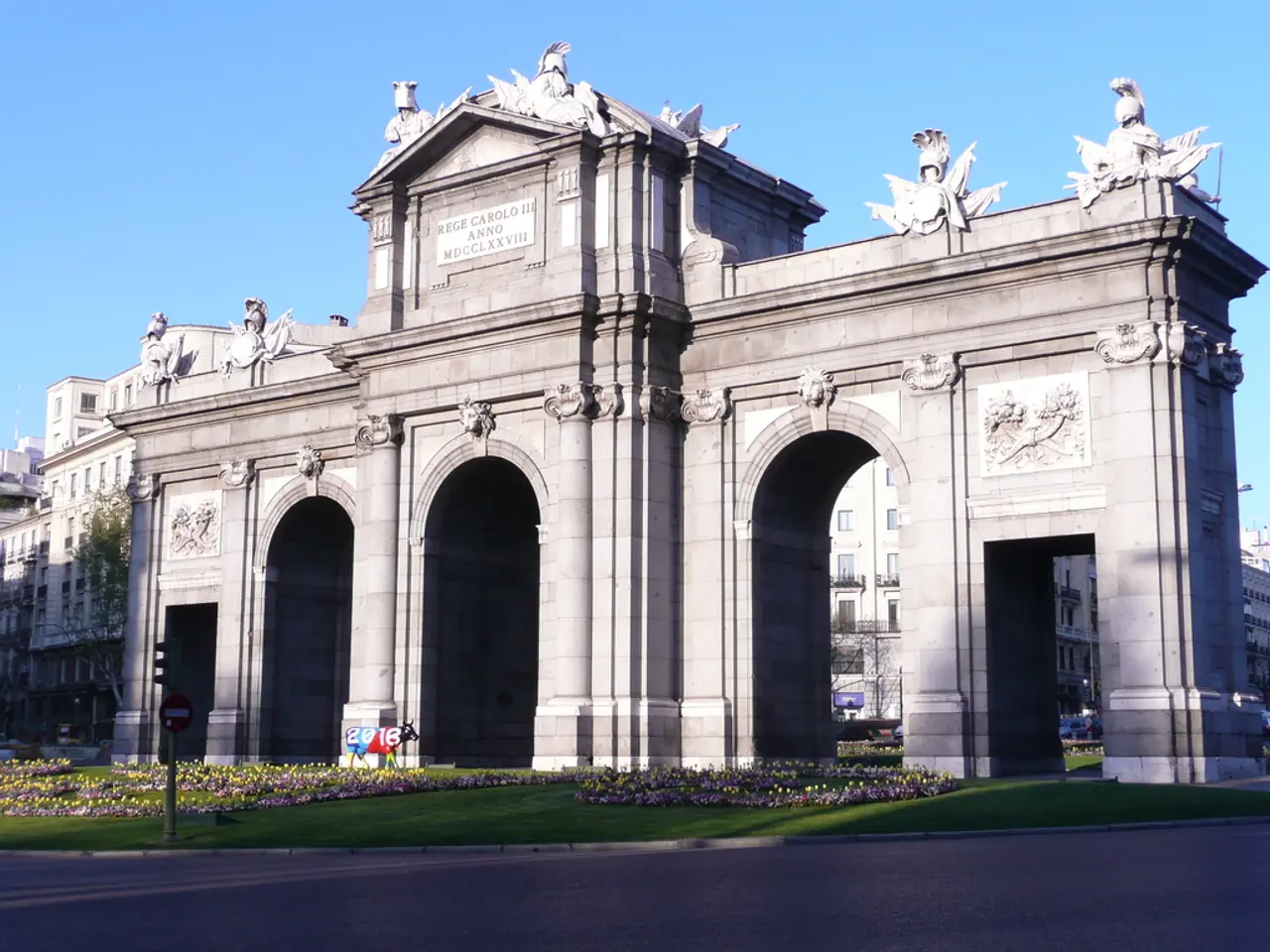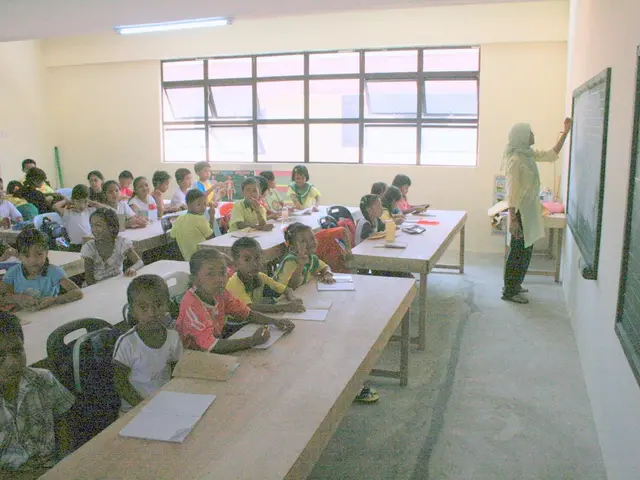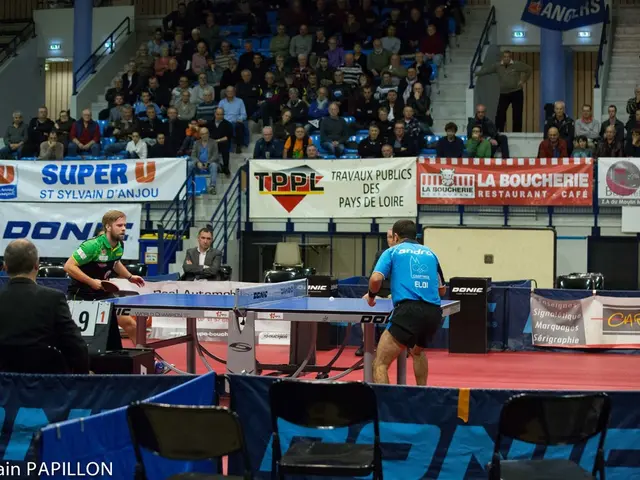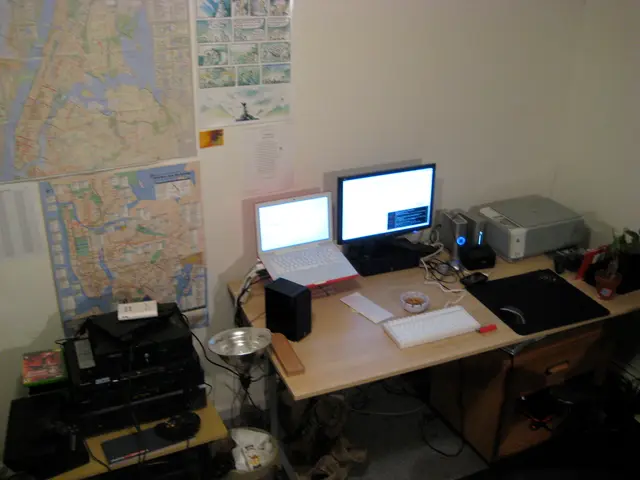Architectural Temporary Solution Proposed by VAMO
The 2021 International Architecture Exhibition of La Biennale di Venezia, themed "Circular Economy Manifesto," is leading the way in waste elimination and carbon neutrality through a collaborative and innovative approach. Curated by MIT professor Carlo Ratti, the exhibition is a testament to the power of natural, artificial, and collective intelligence in combating the climate crisis.
At the heart of this initiative is VAMO (Vegetal, Animal, Mineral, Other), an ultra-lightweight, biodegradable, and transportable canopy designed for the Corderie of the Venice Arsenale. The project, a part of the exhibition, is the brainchild of John Ochsendorf, MIT professor and founding director of MIT Morningside Academy of Design (MAD).
VAMO is more than just a temporary shelter for new thinking. It's a material and structural prototype that will evolve into multiple different forms after the Biennale. The structural system of VAMO showcases panels made of biodegradable and low-energy materials, including reclaimed timber and hemp rope. Several materials used in VAMO were advanced through ventures supported by MITdesignX, a program dedicated to design innovation and entrepreneurship at MAD.
The composite structure encapsulates multiple life spans within a diverse material palette of waste materials from vegetal, animal, and mineral forms. The wooden rings of VAMO were fabricated using salvaged beams and boards from two temporary buildings in Switzerland - the Huber and Music Pavilions. The canopy showcases a series of sustainable claddings and finishes made from upcycled materials such as coconut husks, spent coffee grounds, and pineapple peel.
The process of fabricating VAMO's wooden rings and hemp rope structure embraced natural, artificial, and collective intelligence. The Digital Structures research group led the design of structural geometries for VAMO, using custom digital tools Ariadne and Theseus to enable a process of inverse form-finding. Adriana Giorgis, a designer and teaching fellow in architecture at MIT, played a crucial role in bringing the parts of the project together and helped shape the collective understanding of long-term design thinking.
After the Biennale, VAMO will be disassembled, possibly reused for further exhibitions, and finally relocated to a natural reserve in Switzerland for research as it biodegrades. This approach positions the Biennale as both a reflective and proactive platform, showcasing how architecture can adopt circular economy principles to reduce environmental impact notably by eliminating waste and striving for carbon neutrality in construction and design through collaborative innovation.
The exhibition, called "Intelligens. Natural. Artificial. Collective," is a powerful example of how architectural exhibitions can lead by example in adopting circular economy principles. By implementing waste elimination, carbon neutrality, collaboration, and innovation, the 2021 Biennale is setting a new standard for sustainable architecture.
- The faculty at MIT, particularly professors Carlo Ratti and John Ochsendorf, are spearheading a circular economy manifesto through the 2021 International Architecture Exhibition of La Biennale di Venezia.
- VAMO, an innovative and biodegradable canopy, is the centerpiece of this exhibition, designed by MIT professor John Ochsendorf in collaboration with MIT MAD.
- VAMO is not just a shelter for new thinking; it's also a material and structural prototype that can evolve into multiple forms after the Biennale.
- The structural system of VAMO uses low-energy materials such as reclaimed timber and hemp rope, many of which were advanced through design ventures supported by MITdesignX.
- The composite structure of VAMO features a diverse material palette, including upcycled materials like spent coffee grounds and pineapple peel.
- The wooden rings of VAMO were made from salvaged beams and boards from temporary buildings in Switzerland.
- The digital design of VAMO's structural geometries was led by the Digital Structures research group at MIT, using custom tools Ariadne and Theseus for inverse form-finding.
- Adriana Giorgis, a designer and teaching fellow in architecture at MIT, played a crucial role in bringing the VAMO project together and shaping its collective understanding.
- After the Biennale, VAMO will be disassembled, potentially reused for further exhibitions, and eventually relocated to a Swiss natural reserve for research as it biodegrades.
- The Biennale's approach positions it as both a reflective and proactive platform, demonstrating how architecture can reduce environmental impact by adopting circular economy principles.
- The exhibition, titled "Intelligens. Natural. Artificial. Collective," is a model for how architectural exhibitions can lead by example in adopting circular economy principles.
- The 2021 Biennale is paradigm-shifting in its implementation of waste elimination, carbon neutrality, collaboration, and innovation for sustainable architecture.
- This initiative is a testament to the power of natural, artificial, and collective intelligence in combating the climate crisis.
- Entrepreneurship and design innovation are integral to the success of projects like VAMO, as demonstrated by the ventures supported by MITdesignX.
- The engineering of VAMO's biodegradable materials and composite structure is a significant contribution to the field of environmental science, promoting sustainability and energy conservation.
- The 2021 Biennale's commitment to sustainability extends beyond architecture to encompass lifestyle, fashion-and-beauty, food-and-drink, and even gadgets.
- The news of this groundbreaking exhibition has generated enthusiasm in the press, as well as the academic and entrepreneurial communities, sparking conversations about the role of AI, data-and-cloud-computing, and cybersecurity in a circular economy.
- The Biennale's approach to education and self-development emphasizes personal growth, career development, and learning, with skills-training programs focused on the future of technology and artificial intelligence.
- This exhibition is not only a showcase for sustainable architecture but also serves as entertainment, a job-search platform, and a resource for learning and skills-training in the fields of engineering, science, and design.







